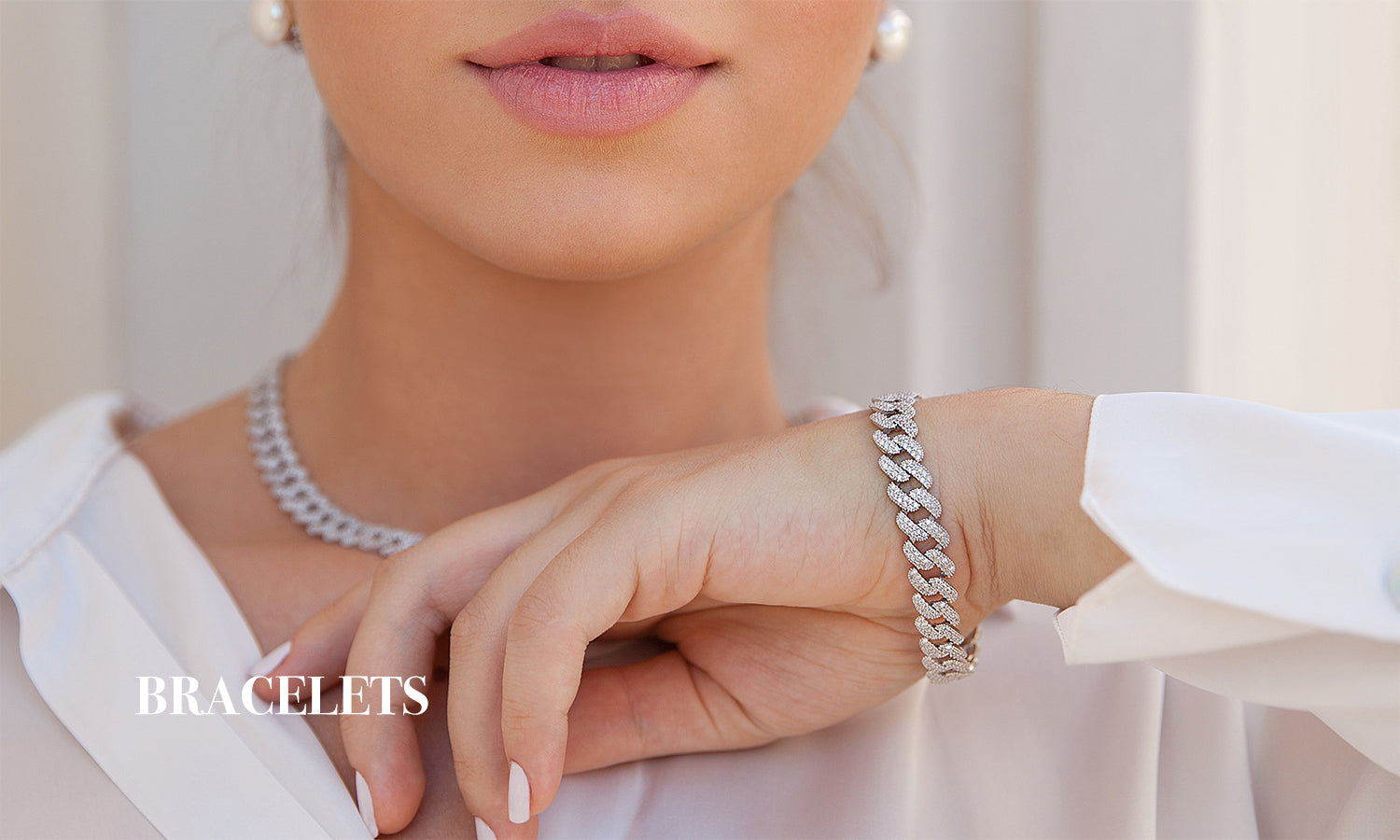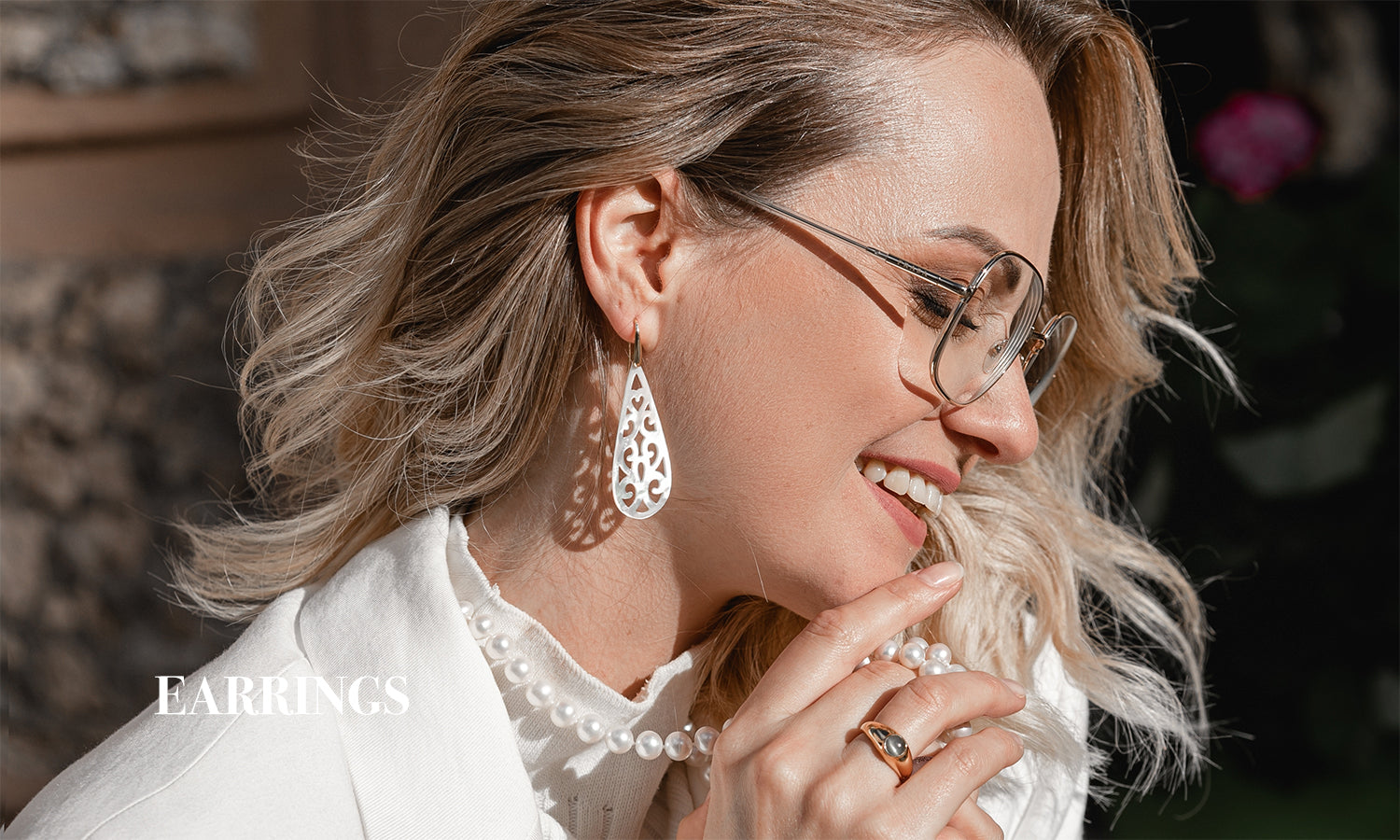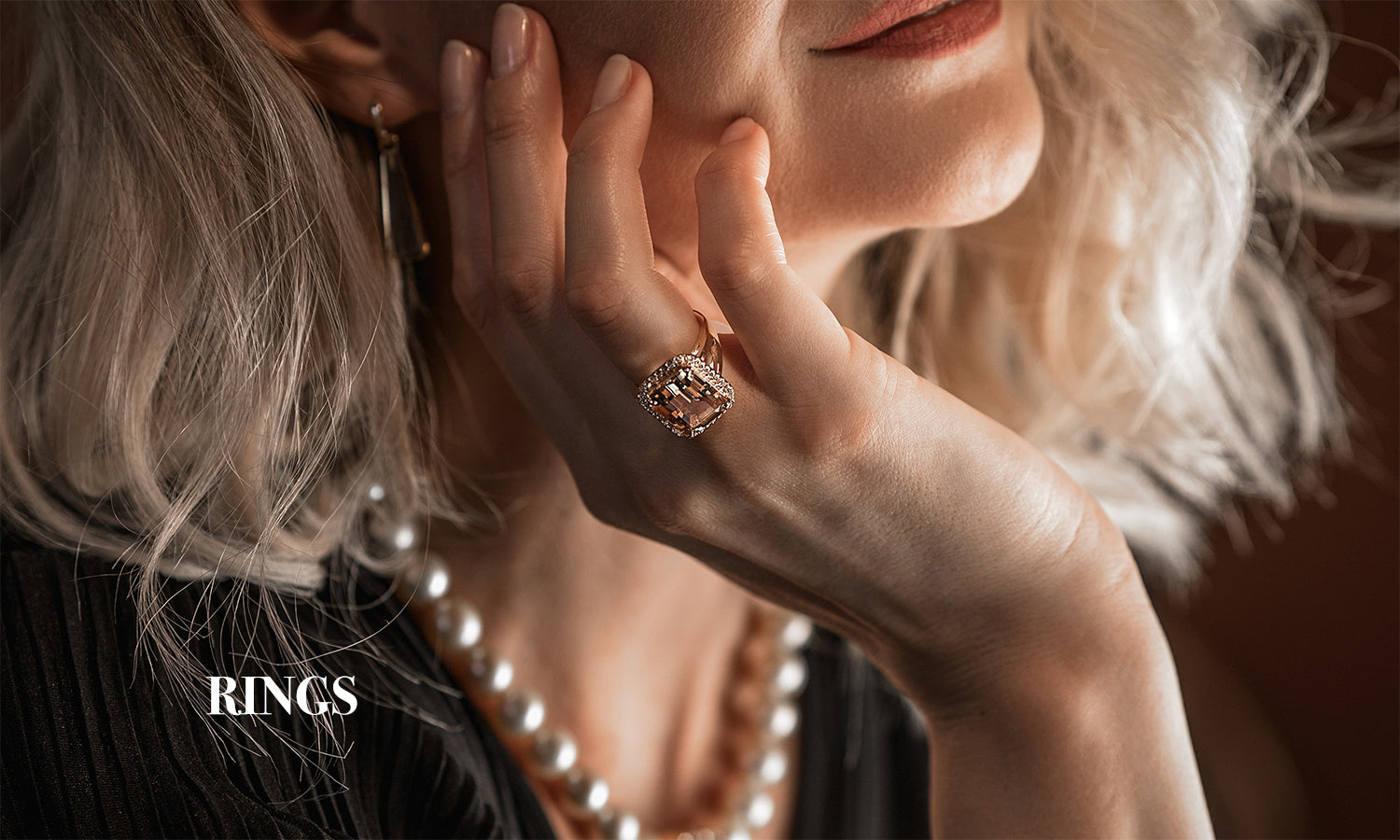
The Art of Engraving Rings and its Popularity Over the Years that Planderful Embraces
Share
Engraved rings have been around since ancient times. In ancient Egypt, rings were often used as symbols of power and status and were often inscribed with symbols or messages. In ancient Rome, rings signified marriage and were often engraved with the couple's names.
The History of Engraved Rings

In the Middle Ages, rings were primarily worn by the wealthy and were often engraved with coats of arms or religious symbols. In the 17th and 18th centuries, rings became more popular and ornate and were often engraved with initials or mottos. Today, engraved rings are a popular way to commemorate important events or special occasions. They can be inscribed with names, dates, initials, or a special message.
Engraved rings have become a popular way to express love and commitment, with couples often exchanging rings engraved with a meaningful message or symbol. They are also popular for commemorating special occasions such as anniversaries, birthdays, or graduations. Engraved rings can also be a meaningful gift for a loved one, with sentimental messages or initials reminding them of their special bond.
Engraved rings have been around for centuries and have been a popular choice for wedding bands and other special occasions. The history of engraved rings dates back to the Middle Ages when rings were used as a symbol of power and status. Over time, the engraving techniques have become increasingly intricate, making engraved rings a beautiful and meaningful way to express one's love and commitment.
The earliest known engraved rings date back to the Middle Ages. During this time, rings were used to signify power and status. Kings, queens, and other members of nobility would often wear engraved rings to demonstrate their wealth and social standing. The engraving was expensive and complicated, so only the wealthiest could afford to engrave their rings.
Engraved rings also had a more practical purpose in the Middle Ages. Rings were often used to seal deals and documents, as an engraved ring was a sign of authenticity. These rings were typically made of gold or silver and included the seal of the person's family crest. As time passed, many of these rings were passed down from generation to generation, becoming treasured family heirlooms.

In the 16th century, engraved rings became more popular among the general public. This birthed a new trend of giving engraved rings as a symbol of love and commitment. Engraved rings were often given to signify an engagement or a wedding. They were also given as tokens of friendship and appreciation.
The 19th century saw the development of new engraving techniques, such as intaglio and cameo. Intaglio is an engraving technique that involves carving into a flat surface, such as a ring or a stone. Cameo is a type of jewelry with a raised design, usually relief or intaglio—these new engraving techniques allowed for more intricate designs, which made engraved rings even more popular.
The 20th century saw the development of new engraving methods, such as laser engraving. Laser engraving is a highly precise process that produces intricate and detailed designs.
Today, engraved rings are still popular for wedding bands and other special occasions. Engraved rings can be made from various materials, including gold, silver, titanium, and stainless steel. They can feature various designs and be personalized with names, dates, or special messages. Engraved rings are a timeless and beautiful way to express love and commitment.
Throughout the centuries’, engraved rings have been a symbol of love and commitment. From the Middle Ages to today, engraved rings have been used to express love and appreciation. Engraved rings are a timeless and beautiful way to show someone how much they mean to you.
The Different Types of Engraving Techniques

Hand Engraving
Hand engraving is a centuries-old practice requiring an artisan to use a hammer and a chisel to create intricate designs and patterns on various surfaces. This process is often used to create an image or text on metal. The metal can be anything from jewelry to guns, watches, or other metal. Hand engraving requires a high level of skill, as it is a very precise process that requires a steady hand.
The engraver starts by first sketching the design onto the metal surface. This is done using a sharp tool such as a scribe. Once the design is sketched, it is transferred to the metal using a template. The template is then used as a guide to creating the desired pattern or design.
The engraver then uses a hammer and a chisel to carve out the design. A chisel is a sharp tool used to cut metal from the surface. The hammer is used to strike the chisel to create the desired effect.
This process is very time consuming and requires patience and great attention to detail. The engraver will often have to make several passes over the metal to achieve the desired result. The process can take several hours to complete, depending on the complexity of the design.
Machine Engraving
One of the most popular forms of engraving is machine engraving, which involves creating intricate designs, patterns, and text on various materials. This type of engraving is used in various applications, from personalization and gift-giving to industrial production and manufacturing.

Machine engraving is a process that involves using a machine to cut or etch a design into a variety of materials. The machine is programmed with a design and then uses a rotating bit to cut or etch the design into the material. This process is often used to create intricate designs on metal, stone, glass, and other materials.
The most common type of machine engraving is rotary engraving, which is a process that utilizes a spinning bit to etch the design into the material. This type of engraving is often used to create personalized items such as wedding rings, trophies, jewelry, and other items that require intricate details. Rotary engraving is also used to create signs, industrial parts, and other objects.
Laser Engraving
Laser engraving is an increasingly popular method of etching or marking images and designs onto various materials. Laser engraving is an extremely precise and accurate way to produce long-lasting images ideal for various applications, from industrial parts and components to jewelry and personal items.
Laser engraving works by using a targeted beam of light to burn or etch an image into the material being engraved. The laser beam is directed at the material's surface using a computer-controlled system. It can create various engraving effects, including text, logos, and even photographs. The laser beam is focused on a very small area, so the precision and accuracy of the engraving are extremely high compared to other types of engraving. The laser beam can also penetrate the material, meaning that the engraving is permanent and will not fade or wear away with time.
Laser engraving can be used on various materials, including metals, plastics, wood, stone, and glass. The material to be engraved is placed on a bed, and the laser is programmed to move in a specific pattern over the material's surface. The laser beam is then used to etch or burn the image into the material. The amount of time it takes to engrave an image depends on the size and complexity of the image and the material being engraved.

Laser engraving is often used for industrial applications, such as producing serial numbers and logos on components and parts. It also produces personalized items such as jewelry, trophies, and awards. Laser engraving is also used for architectural and decorative applications, such as staircases, doorways, and even windows.
The cost of laser engraving depends on the size and complexity of the image and the material being engraved. Generally, the cost of laser engraving is lower than other engraving methods, such as hand engraving or sandblasting. The cost of laser engraving can also be lower than other methods because the process is much faster and more accurate, meaning less time and effort are required to produce the final product.
Laser engraving is an ideal choice for many applications. The precision and accuracy of the process make it ideal for producing long-lasting, highly detailed images and designs. The process is also relatively quick and cost-effective, making it an attractive option for many projects. Laser engraving is a versatile and reliable method of producing high-quality images and designs on various materials.
Chemical Etching
Chemical etching is one of the oldest and most widely used engraving techniques. It is a cost-effective method of producing intricate shapes, lines, and patterns in metal plates, panels, and other objects. The process involves using a specific chemical solution to erode the surface of a metal plate or panel, creating a desired design or pattern. Chemical etching is an economical alternative to other engraving techniques, such as laser or rotary engraving, and is often used for industrial and commercial purposes.
The chemical etching process begins by applying a resist to the surface of the metal plate or panel. This can be done using various methods, such as applying a wax or plastic sheet, a rubber stamp, or a stencil. Once the resist has been applied, the plate or panel is placed into a tank of a specific chemical solution, such as ferric chloride or sodium hydroxide. After a certain amount of time, the chemical solution corrodes the unprotected areas of the metal surface, leaving behind an intricate pattern or design.

Chemical etching is an ideal engraving technique for many materials, including stainless steel, aluminum, brass, copper, and other metals. It is also ideal for producing intricate and detailed designs, as the chemical solution can etch even the smallest lines and shapes. This makes chemical etching an excellent choice for producing intricate logos, signs, and other markings.
In addition to its cost-effectiveness and detailed designs, chemical etching has several other advantages. This engraving technique is clean and non-polluting, as the chemicals used are recyclable and non-toxic. Additionally, chemical etching results in a smooth surface that is easy to clean and maintain.
Another advantage of chemical etching is that it is a flexible engraving technique. This allows the designer to create unique designs that are impossible with other engraving techniques. Additionally, the chemical etching process can create multiple copies of a design, as the resist can be easily reused.
Despite its numerous advantages, there are some drawbacks to the chemical etching process. For example, the chemicals used in this engraving technique can be dangerous to work with, and proper safety precautions must be taken when handling them. Additionally, chemical etching cannot be etched in certain metals, such as titanium and tungsten.
Overall, chemical etching is an economical and versatile engraving technique that produces intricate and detailed designs. This engraving technique is suitable for various metals and can create multiple copies of a design. Despite its potential risks, chemical etching is an excellent choice for those looking for a cost-effective and reliable engraving technique.
Stencil Engraving
Stencil engraving is one of the most popular techniques used to create various items, from signage to jewelry. This engraving involves using a stencil or template to create the desired design. The stencil is then placed onto the material to be engraved, and the engraver uses a cutting tool to trace the design. This technique is often used to create intricate designs, logos, and patterns.

The main advantage of stencil engraving is that it allows for a large amount of detail to be incorporated into the design. It is also a relatively quick and easy process. The stencil also makes it easy to replicate the design. This makes it ideal for large-scale production, as the same design can be reproduced multiple times.
Stencil engraving can be used on various materials, including wood, metal, glass, stone, and plastic. The type of material used will determine the type of cutting tool that is used. For example, a rotary tool may be used on softer materials such as wood, while a diamond-tipped tool is used on harder materials such as metal.
The downside of stencil engraving is that it can take time to achieve a precise level of detail. Also, the stencil must be carefully aligned with the material to create a perfect design. This cannot be easy to do by hand, so a template is often used.
Embossing
Embossing is engraving that uses pressure to form an image or text onto the material's surface. This technique is often used to create raised images and letters on jewelry, coins, awards, and other items. Embossing is a popular choice for creating intricate and detailed designs, as the raised images and text provide a great texture and look that can't be achieved with other engraving techniques.
The embossing wheel is a round steel tool with a point or blade on the end that is used to create the raised design. The wheel is pressed into the material, applying pressure to form the design. The depth of the design depends on how hard the wheel is pressed.
Embossing is a great choice for creating intricate and detailed designs, as the raised images and text provide a great texture and look that can’t be achieved with other engraving techniques. The raised details can create a stylish and unique look that stands out from the rest. Embossing is also ideal for creating awards and items that need to be personalized, as the raised letters and images are easy to read and can be customized to the recipient’s desires.

Embossing is a relatively simple engraving technique that requires patience and precision to create the desired results. It is important to use the right amount of pressure when embossing, as too much pressure can cause the design to be too deep, and too little pressure can cause the design to be too shallow. It is also important to use the right type of material when embossing, as some materials may need to be too soft or too hard to create the desired results.
Embossing is a great choice for creating intricate and detailed designs that stand out from the rest. This technique is ideal for creating awards and items that need to be personalized, as the raised letters and images are easy to read and can be customized to the recipient's desires. Embossing is a relatively simple engraving technique that requires patience and precision to create the desired results. With the right tools and techniques, embossing can create unique and stylish items that will be treasured for years.
The Benefits of Engraving a Ring
- Engraving a ring is a beautiful way of adding a personal touch to a piece of jewelry. Whether it be a wedding band, an engagement ring, or just a simple band, engraving your piece of jewelry can make it even more special. Not only does it make it unique, but it also has a variety of other benefits. Here are some of the ways that engraving a ring can benefit you:
- One of the main benefits of engraving a ring is that it adds a personal touch to the piece of jewelry. Whether you choose to engrave your initials, a special phrase, or a meaningful date, engraving your ring can make it even more special. It adds a personal touch to be cherished for years to come.
- Engraving a ring can also be a great way to commemorate a special event or person. Whether it's a wedding, anniversary, to just a special occasion, engraving a ring can be a great way to remember and honor the event. Engraving a ring can also be a great way to remember a loved one who has passed away.
- Another benefit of engraving a ring is that it can make it easier to identify the piece of jewelry. If the ring is lost or stolen, the engraving can make it easier for someone to track down the ring's owner. This can be especially helpful if the ring is an heirloom or has sentimental value.
- Engraving a ring can also help to keep it secure. Many engagement rings and wedding bands come with a secure engraving that is difficult to remove or alter. This can help to keep the ring safe and secure, and it can also help to make sure that it is not stolen or misplaced.
- Finally, engraving a ring can also be a great way to add an element of style to the piece of jewelry. Many rings come with a monogrammed engraving or an inscription with a special phrase or date. This can make the ring look even more beautiful and unique and also be a great way to make the jewelry stand out.
How to Choose the Right Engraving for Your Ring

Choosing an engraving for your ring is a special way to make it even more meaningful. Whether it's an engagement or wedding ring, a milestone birthday gift, or a sign of friendship, the right engraving can add an extra sentiment and make the ring much more unique. But with so many options, how do you decide which engraving is right for your ring? We've put together a few tips to help you decide.
- Think about the type of engraving you want. Do you want something traditional, like a name, date, or a more creative phrase or quote? Consider having a symbol or image engraved. This could be something meaningful to you, like a heart, a flower, an animal, or something that represents your relationship, like a pair of intertwined rings.
- Next, decide what font you want engraved in the ring. If you’re going for a traditional look, choose a simple, classic font like Times New Roman or Arial. If you’re looking for something more modern, try a sans-serif font like Helvetica or Futura. If you’re looking for something more whimsical or creative, consider a decorative font like Brush Script or Monotype Corsiva.
- Think about the size of the engraving. Generally, the engraving size should be proportional to the size of the ring. If you're engraving a phrase or quote, larger font size may be necessary to fit it all in. However, if you're engraving a name or date, smaller font size may be better to ensure that the text is legible.
- Consider the material of the ring. The engraving can be done by hand if the ring is made of a softer metal, like gold or silver. This is the best option if you want a more intricate design. However, if the ring is made of a harder metal, like titanium or stainless steel, the engraving will need to be done with a laser to ensure that it is precise and long-lasting.
- Finally, think about the placement of the engraving. If you have a name or date engraved, the inside of the ring is the best option. This ensures that the engraving will be seen only by you and your partner. However, if you have a phrase or quote engraved, the outside of the ring is a better option. This way, it can be seen and appreciated by everyone.
Choosing the right engraving for your ring can be difficult, but it doesn't have to be. Following these tips ensures that your engraving is meaningful, unique, and perfect for your ring. With the right engraving, your ring will be even more special and a lasting reminder of your love and relationship for years to come.

The most important thing is choosing an engraving that is meaningful to you. Don't be afraid to get creative and choose something unique that you know will make your ring even more special. With the right engraving, your ring will symbolize your relationship for years.




